Having IT troubles? You’re not the only one. Both small and big businesses face IT challenges, which can mess up their day, lead to unhappy customers, and waste time and money.
Think about this: small businesses can lose between $137 to $427 every minute when their systems are down. Bigger companies? They might lose more than $16,000 per minute, or a whopping $1 million in just an hour, during a glitch.
Says Jason Harlam, Business Development Manager at Technology Advisory Group, “Technology is the backbone of modern business, and a responsive IT help desk is its lifeline.”
That’s why having a good IT help desk is so important. To help you out, we’ve put together a list of eight simple IT help desk best practices that every business, no matter its size, should follow.
Are Your Users Complaining of Your Slow Response Times?Respond to emergency issues in near real time and eliminate recurring problems with TAG. |
Before We Go Further, Here’s a Quick Recap…
An IT helpdesk is a vital support system for any business. It addresses technological challenges, ensuring seamless operations.
For instance, imagine a financial department preparing for an essential review but encountering issues accessing crucial budget files. The clock is ticking. With the IT helpdesk’s expertise, the system is quickly rectified, the files retrieved, and the meeting proceeds without delay.
For another example, a remote employee is unable to access a shared folder on your company’s server. They reach out to the help desk, which in minutes is able to troubleshoot the VPN issue that was preventing them from accessing it.
Beyond troubleshooting, the IT helpdesk can also offer guidance on software and hardware usage, optimizing productivity.
9 IT Help Desk Best Practices (and Why They Are Important)
1. Give User Experience Top Priority
Prioritizing a positive customer experience is essential. It goes beyond just fixing the problem; it’s about the impression you leave on your users throughout the journey.
Always aim to communicate with clarity, express understanding, and guarantee prompt responses to enhance customer contentment.
2. Establish Clear SLAs
Service level agreements (SLAs) establish clear expectations for your help desk services. They specify response and resolution times, ensuring alignment between the service desk teams and users.
3. Deploy an Effective Ticketing System
An organized ticketing system efficiently handles the volume of support tickets, ensuring they’re prioritized by urgency. Studies indicate that 86% of service team members feel their productivity is boosted when using a help desk equipped with such a system.
IT Help Desk Categories Best Practices |
||
| Ticket Category | Description | Suggested Priority Level |
| Technical Issues | Tickets related to software bugs, hardware problems, connectivity issues, or other technical glitches. | High |
| Billing and Payments | Inquiries about software licenses, renewals, and other IT-related financial concerns. | Medium |
| Product Inquiries | Questions related to the usage and features of IT tools, software, or hardware. | Medium |
| Complaints and Feedback | Feedback or dissatisfaction related to IT services, tools, or infrastructure. | Medium |
| Account Management | Issues related to user profiles, password resets, account verification, and access permissions. | High |
| Policy Questions | Inquiries about IT policies, security protocols, and usage guidelines. | Low |
| Network Issues | Problems related to connectivity, VPN, bandwidth, or other network-related concerns. | High |
| Hardware Requests | Service requests for new hardware, replacements, or hardware repairs. | Medium |
| Software Installation/Updates | Requests or issues related to the installation, updating, or licensing of software. | Medium |
| Security Concerns | Reports of potential security breaches, phishing attempts, or other security-related incidents. | High |
| Data Backup and Recovery | Issues or requests related to data backups, data loss, or data recovery. | High |
| Access Requests | Requests for access to specific tools, systems, or data repositories. | Medium |
4. Empower Customer Support Teams
Make sure your support agents have the tools, training and authority they need to resolve users’ queries. A structure that is over-centralized with limited scripting will force your help desk staff to escalate even simple issues, increasing pressure on your service desk.
5. Create a Knowledge Base
A strong knowledge base benefits both your support staff and users. It offers immediate answers and enables users to help themselves with ease. In fact, 91% of customers say they would turn to an online knowledge base if it addressed their requirements.
6. Ensure Regular Training for Your Helpdesk Staff
Provide your helpdesk team with up-to-date knowledge. Consistent training not only sharpens their abilities but also boosts their efficiency in resolving issues promptly. This directly translates to happier and more satisfied customers.
7. Collecting Feedback is an Essential IT Help Desk Best Practice
User feedback is priceless. It offers direct perspectives on where your helpdesk can improve, paving the way for ongoing refinement in customer support. Integrating this feedback can lead to more tailored solutions and a better understanding of user needs.
| More resources you might like: |
8. Routinely Review Your Processes
The digital realm is constantly changing, and your IT help desk must adapt accordingly. Periodic assessments pinpoint areas for enhancement, making sure your service portal stays reliable and credible.
9. Be Proactive in Your Approach to IT Support
A proficient IT help desk is proactive, not just reactive. By gearing up your help desk to foresee and address issues, you enhance the user experience.
As your team processes tickets, they can spot trends and address concerns preemptively, preventing small problems from magnifying. Interestingly, research indicates that 80% of help desk tickets consist of recurring questions.

Make Sure Your MSP Follows These IT Help Desk Best Practices
Your IT help desk is at the frontline of keeping your business productive and profitable. It ensures lower resolution times for problems, supports users, and provides valuable insight into where recurring issues exist (through things such as ticket volumes).
At Technology Advisory Group, we know how important the help desk’s role is in ensuring a reliable IT environment. That’s why our team is available during regular business hours and after hours for emergencies. We focus on answering your questions and resolving issues before they become outages.
Book a free consultation today to learn more about what an expert IT help desk can do for your business.
| Proven IT Help Desk Services Near You |
Schedule Your Cloud Services Consultation
Ready to make a move to the cloud? TAG is ready to help with any or all cloud services from a private cloud, public cloud, or Microsoft 365 services.


